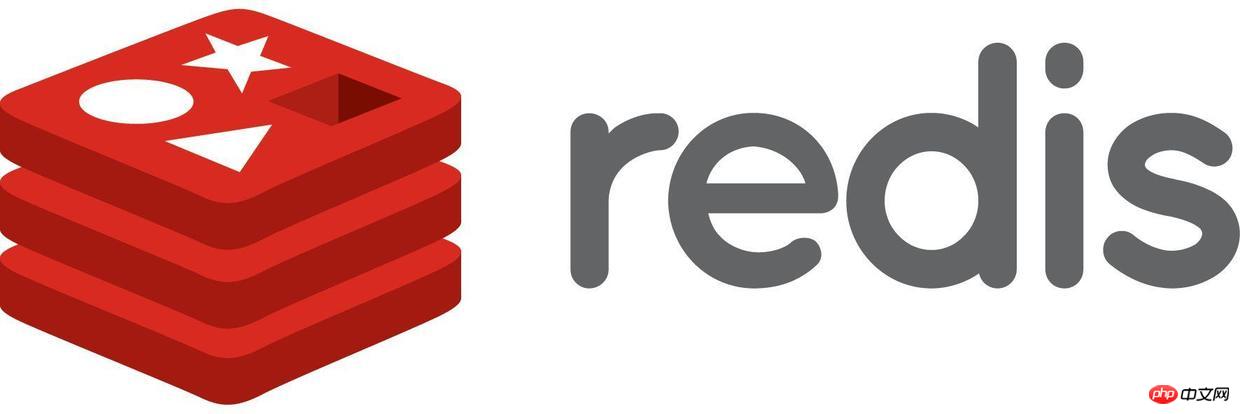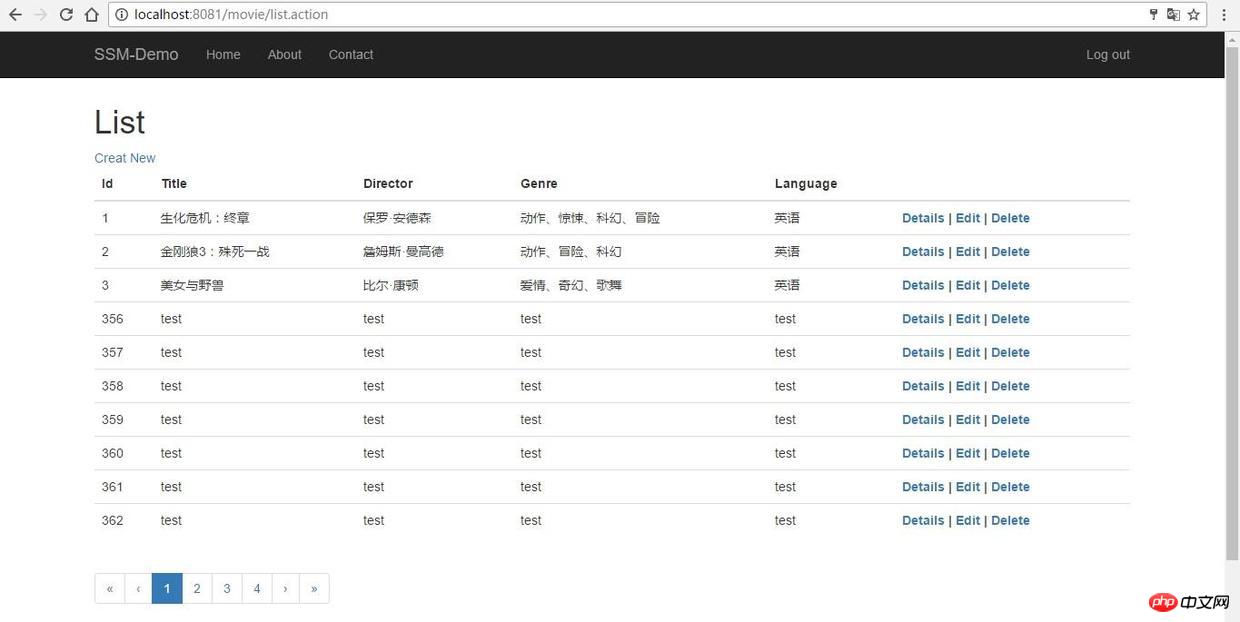Java에서 Redis와 SSM 통합에 대한 자세한 설명

Redis 설치 및 사용
첫 번째 단계는 물론 Redis를 설치하는 것입니다. 여기서는 Windows에 설치하는 경우를 예로 들어보겠습니다.
먼저 Redis를 다운로드하면 msi 또는 zip 패키지 설치 방법을 선택할 수 있습니다.
zip 방법은 cmd 창을 열고 압축이 풀린 디렉터리에서
redis-server redis.windows.conf를 실행해야 합니다. Redis를 시작하려면redis-server redis.windows.conf启动Redis采用msi方式安装后Redis默认启动,不需要进行任何配置
可以在redis.windows.conf文件中修改Redis端口号、密码等配置,修改完成后使用
redis-server redis.windows.conf命令重新启动在Redis安装目录下执行
redis-cli -h 127.0.0.1 -p 6379 -a 密码打开Redis操作界面如果报错
(error) ERR operation not permitted,使用auth 密码进行验证
SSM整合Redis
这里直接在上一篇SSM之框架整合的基础上进行Redis整合,这里需要注意,存入Redis的pojo类必须实现Serializable接口。
配置pom.xml引入Redis依赖
<!--redis--><dependency>
<groupId>org.springframework.data</groupId>
<artifactId>spring-data-redis</artifactId>
<version>1.6.1.RELEASE</version></dependency><dependency>
<groupId>redis.clients</groupId>
<artifactId>jedis</artifactId>
<version>2.7.3</version></dependency>redis.properties
redis.host=127.0.0.1 redis.port=6379 redis.password=redis redis.maxIdle=100 redis.maxWait=1000 redis.testOnBorrow=true redis.timeout=100000 defaultCacheExpireTime=3600
applicationContext-redis.xml
<?xml version="1.0" encoding="UTF-8"?><beans xmlns="http://www.springframework.org/schema/beans"
xmlns:xsi="http://www.w3.org/2001/XMLSchema-instance"
xmlns:mvc="http://www.springframework.org/schema/mvc"
xmlns:context="http://www.springframework.org/schema/context"
xmlns:aop="http://www.springframework.org/schema/aop"
xmlns:tx="http://www.springframework.org/schema/tx"
xsi:schemaLocation="http://www.springframework.org/schema/beans
http://www.springframework.org/schema/beans/spring-beans.xsd
http://www.springframework.org/schema/mvc
http://www.springframework.org/schema/mvc/spring-mvc.xsd
http://www.springframework.org/schema/context
http://www.springframework.org/schema/context/spring-context.xsd
http://www.springframework.org/schema/aop
http://www.springframework.org/schema/aop/spring-aop.xsd
http://www.springframework.org/schema/tx
http://www.springframework.org/schema/tx/spring-tx.xsd">
<!--引入Redis配置文件-->
<bean id="propertyConfigurer" class="org.springframework.beans.factory.config.PropertyPlaceholderConfigurer">
<property name="locations">
<list>
<value>classpath:redis.properties</value>
</list>
</property>
</bean>
<!-- jedis 连接池配置 -->
<bean id="poolConfig" class="redis.clients.jedis.JedisPoolConfig">
<property name="maxIdle" value="${redis.maxIdle}"/>
<property name="maxWaitMillis" value="${redis.maxWait}"/>
<property name="testOnBorrow" value="${redis.testOnBorrow}"/>
</bean>
<!-- redis连接工厂 -->
<bean id="connectionFactory" class="org.springframework.data.redis.connection.jedis.JedisConnectionFactory">
<property name="poolConfig" ref="poolConfig"/>
<property name="port" value="${redis.port}"/>
<property name="hostName" value="${redis.host}"/>
<property name="password" value="${redis.password}"/>
<property name="timeout" value="${redis.timeout}"></property>
</bean>
<bean id="redisTemplate" class="org.springframework.data.redis.core.RedisTemplate">
<property name="connectionFactory" ref="connectionFactory"/>
<property name="keySerializer">
<bean class="org.springframework.data.redis.serializer.StringRedisSerializer"/>
</property>
<property name="valueSerializer">
<bean class="org.springframework.data.redis.serializer.JdkSerializationRedisSerializer"/>
</property>
</bean>
<!-- 缓存拦截器配置 -->
<bean id="methodCacheInterceptor" class="com.zkh.interceptor.MethodCacheInterceptor">
<property name="redisUtil" ref="redisUtil"/>
<property name="defaultCacheExpireTime" value="${defaultCacheExpireTime}"/>
<!-- 禁用缓存的类名列表 -->
<property name="targetNamesList">
<list>
<value></value>
</list>
</property>
<!-- 禁用缓存的方法名列表 -->
<property name="methodNamesList">
<list>
<value></value>
</list>
</property>
</bean>
<bean id="redisUtil" class="com.zkh.util.RedisUtil">
<property name="redisTemplate" ref="redisTemplate"/>
</bean>
<!--配置切面拦截方法 -->
<aop:config proxy-target-class="true">
<aop:pointcut id="controllerMethodPointcut" expression="
execution(* com.zkh.service.impl.*.select*(..))"/>
<aop:advisor advice-ref="methodCacheInterceptor" pointcut-ref="controllerMethodPointcut"/>
</aop:config></beans>MethodCacheInterceptor.java
package com.zkh.interceptor;
import com.zkh.util.RedisUtil;
import org.aopalliance.intercept.MethodInterceptor;
import org.aopalliance.intercept.MethodInvocation;
import java.util.List;
/**
* Redis缓存过滤器
*/
public class MethodCacheInterceptor implements MethodInterceptor {
private RedisUtil redisUtil;
private List<String> targetNamesList; // 禁用缓存的类名列表
private List<String> methodNamesList; // 禁用缓存的方法列表
private String defaultCacheExpireTime; // 缓存默认的过期时间
@Override
public Object invoke(MethodInvocation invocation) throws Throwable {
Object value = null;
String targetName = invocation.getThis().getClass().getName();
String methodName = invocation.getMethod().getName();
if (!isAddCache(targetName, methodName)) {
// 跳过缓存返回结果
return invocation.proceed();
}
Object[] arguments = invocation.getArguments();
String key = getCacheKey(targetName, methodName, arguments);
try { // 判断是否有缓存
if (redisUtil.exists(key)) {
return redisUtil.get(key);
} // 写入缓存
value = invocation.proceed();
if (value != null) {
final String tkey = key;
final Object tvalue = value;
new Thread(new Runnable() {
@Override
public void run() {
redisUtil.set(tkey, tvalue, Long.parseLong(defaultCacheExpireTime));
}
}).start();
}
} catch (Exception e) {
e.printStackTrace();
if (value == null) {
return invocation.proceed();
}
} return value;
}
/**
* 是否加入缓存
*
* @return
*/
private boolean isAddCache(String targetName, String methodName) {
boolean flag = true;
if (targetNamesList.contains(targetName)
|| methodNamesList.contains(methodName) || targetName.contains("$$EnhancerBySpringCGLIB$$")) {
flag = false;
} return flag;
}
/**
* 创建缓存key
*
* @param targetName
* @param methodName
* @param arguments
*/
private String getCacheKey(String targetName, String methodName,
Object[] arguments) {
StringBuffer sbu = new StringBuffer();
sbu.append(targetName).append("_").append(methodName);
if ((arguments != null) && (arguments.length != 0)) {
for (int i = 0; i < arguments.length; i++) {
sbu.append("_").append(arguments[i]);
}
} return sbu.toString();
} public void setRedisUtil(RedisUtil redisUtil) {
this.redisUtil = redisUtil;
} public void setTargetNamesList(List<String> targetNamesList) {
this.targetNamesList = targetNamesList;
} public void setMethodNamesList(List<String> methodNamesList) {
this.methodNamesList = methodNamesList;
} public void setDefaultCacheExpireTime(String defaultCacheExpireTime) {
this.defaultCacheExpireTime = defaultCacheExpireTime;
}
}RedisUtil.java 工具类
package com.zkh.util;import org.apache.log4j.Logger;import org.springframework.data.redis.core.RedisTemplate;import org.springframework.data.redis.core.ValueOperations;import java.io.Serializable;import java.util.Set;import java.util.concurrent.TimeUnit;/** * Redis工具类 */public class RedisUtil { private RedisTemplate<Serializable, Object> redisTemplate; /** * 批量删除对应的value * * @param keys */
public void remove(final String... keys) { for (String key : keys) { remove(key);
}
} /** * 批量删除key * * @param pattern */
public void removePattern(final String pattern) {
Set<Serializable> keys = redisTemplate.keys(pattern); if (keys.size() > 0)
redisTemplate.delete(keys);
} /** * 删除对应的value * * @param key */
public void remove(final String key) { if (exists(key)) {
redisTemplate.delete(key);
}
} /** * 判断缓存中是否有对应的value * * @param key * @return */
public boolean exists(final String key) { return redisTemplate.hasKey(key);
} /** * 读取缓存 * * @param key * @return */
public Object get(final String key) {
Object result = null;
ValueOperations<Serializable, Object> operations = redisTemplate
.opsForValue();
result = operations.get(key); return result;
} /** * 写入缓存 * * @param key * @param value * @return */
public boolean set(final String key, Object value) { boolean result = false; try {
ValueOperations<Serializable, Object> operations = redisTemplate
.opsForValue();
operations.set(key, value);
result = true;
} catch (Exception e) {
e.printStackTrace();
} return result;
} /** * 写入缓存 * * @param key * @param value * @return */
public boolean set(final String key, Object value, Long expireTime) { boolean result = false; try {
ValueOperations<Serializable, Object> operations = redisTemplate
.opsForValue();
operations.set(key, value);
redisTemplate.expire(key, expireTime, TimeUnit.SECONDS);
result = true;
} catch (Exception e) {
e.printStackTrace();
} return result;
} public void setRedisTemplate(
RedisTemplate<Serializable, Object> redisTemplate) { this.redisTemplate = redisTemplate;
}
}效果展示

刚开始Redis中没有任何记录,接下来访问一下第一页记录

再查看缓存,记录已经存如Redis,并且第一次访问会从Mysql中读取数据


按F5
 msi를 사용하여 설치한 후 Redis는 기본적으로 시작되며 구성이 필요하지 않습니다
msi를 사용하여 설치한 후 Redis는 기본적으로 시작되며 구성이 필요하지 않습니다

redis-server redis.windows.conf 명령을 사용하여 Redis 설치 디렉터리에서 🎜🎜🎜🎜Execute를 다시 시작하세요. redis-cli -h 127.0.0.1 -p 6379 -a Redis 작업 인터페이스를 열려면 비밀번호를 사용하세요. 🎜🎜🎜🎜(오류) ERR 작업이 허용되지 않습니다 오류가 보고되면 인증 비밀번호를 사용하여 확인하세요🎜🎜🎜🎜SSM은 Redis를 통합합니다🎜🎜🎜여기서 직접 Redis 통합은 이전 글의 SSM 프레임워크 통합을 기반으로 수행됩니다. 🎜 여기서 주목해야 할 점은 Redis에 저장된 pojo 클래스는 Serialized를 구현해야 한다는 것입니다. 인터페이스 🎜. 🎜🎜Redis 종속성을 도입하도록 pom.xml을 구성하세요🎜
🎜rrreee
🎜redis.properties🎜
rrreee🎜applicationContext - redis.xml🎜
🎜rrreee
🎜MethodCacheInterceptor.java🎜
🎜rrreee🎜RedisUtil.java 도구 클래스🎜rrreee
🎜효과 표시🎜
🎜 🎜🎜처음에는 Redis에 레코드가 없습니다. 다음으로 레코드의 첫 번째 페이지를 방문하세요🎜🎜
🎜🎜처음에는 Redis에 레코드가 없습니다. 다음으로 레코드의 첫 번째 페이지를 방문하세요🎜🎜 🎜🎜캐시를 다시 확인하세요. 레코드는 Redis에 저장되었으며, 처음에는 Mysql에서 데이터를 읽습니다. 방문🎜🎜
🎜🎜캐시를 다시 확인하세요. 레코드는 Redis에 저장되었으며, 처음에는 Mysql에서 데이터를 읽습니다. 방문🎜🎜 🎜🎜
🎜🎜 🎜🎜페이지를 새로 고치려면
🎜🎜페이지를 새로 고치려면 F5를 누르세요. Tomcat 콘솔에서 SQL 쿼리가 없음을 확인할 수 있습니다. 수행되지만 Redis에서 직접 읽혀집니다. 데이터를 캐싱하면 데이터베이스 부담이 줄어듭니다🎜🎜🎜🎜🎜🎜🎜위 내용은 Java에서 Redis와 SSM 통합에 대한 자세한 설명의 상세 내용입니다. 자세한 내용은 PHP 중국어 웹사이트의 기타 관련 기사를 참조하세요!

핫 AI 도구

Undresser.AI Undress
사실적인 누드 사진을 만들기 위한 AI 기반 앱

AI Clothes Remover
사진에서 옷을 제거하는 온라인 AI 도구입니다.

Undress AI Tool
무료로 이미지를 벗다

Clothoff.io
AI 옷 제거제

Video Face Swap
완전히 무료인 AI 얼굴 교환 도구를 사용하여 모든 비디오의 얼굴을 쉽게 바꾸세요!

인기 기사

뜨거운 도구

메모장++7.3.1
사용하기 쉬운 무료 코드 편집기

SublimeText3 중국어 버전
중국어 버전, 사용하기 매우 쉽습니다.

스튜디오 13.0.1 보내기
강력한 PHP 통합 개발 환경

드림위버 CS6
시각적 웹 개발 도구

SublimeText3 Mac 버전
신 수준의 코드 편집 소프트웨어(SublimeText3)

뜨거운 주제
 7700
7700
 15
15
 1640
1640
 14
14
 1393
1393
 52
52
 1287
1287
 25
25
 1230
1230
 29
29
 Redis 클러스터 모드를 구축하는 방법
Apr 10, 2025 pm 10:15 PM
Redis 클러스터 모드를 구축하는 방법
Apr 10, 2025 pm 10:15 PM
Redis Cluster Mode는 Sharding을 통해 Redis 인스턴스를 여러 서버에 배포하여 확장 성 및 가용성을 향상시킵니다. 시공 단계는 다음과 같습니다. 포트가 다른 홀수 redis 인스턴스를 만듭니다. 3 개의 센티넬 인스턴스를 만들고, Redis 인스턴스 및 장애 조치를 모니터링합니다. Sentinel 구성 파일 구성, Redis 인스턴스 정보 및 장애 조치 설정 모니터링 추가; Redis 인스턴스 구성 파일 구성, 클러스터 모드 활성화 및 클러스터 정보 파일 경로를 지정합니다. 각 redis 인스턴스의 정보를 포함하는 Nodes.conf 파일을 작성합니다. 클러스터를 시작하고 Create 명령을 실행하여 클러스터를 작성하고 복제본 수를 지정하십시오. 클러스터에 로그인하여 클러스터 정보 명령을 실행하여 클러스터 상태를 확인하십시오. 만들다
 PHP vs. Python : 차이점 이해
Apr 11, 2025 am 12:15 AM
PHP vs. Python : 차이점 이해
Apr 11, 2025 am 12:15 AM
PHP와 Python은 각각 고유 한 장점이 있으며 선택은 프로젝트 요구 사항을 기반으로해야합니다. 1.PHP는 간단한 구문과 높은 실행 효율로 웹 개발에 적합합니다. 2. Python은 간결한 구문 및 풍부한 라이브러리를 갖춘 데이터 과학 및 기계 학습에 적합합니다.
 PHP : 웹 개발의 핵심 언어
Apr 13, 2025 am 12:08 AM
PHP : 웹 개발의 핵심 언어
Apr 13, 2025 am 12:08 AM
PHP는 서버 측에서 널리 사용되는 스크립팅 언어이며 특히 웹 개발에 적합합니다. 1.PHP는 HTML을 포함하고 HTTP 요청 및 응답을 처리 할 수 있으며 다양한 데이터베이스를 지원할 수 있습니다. 2.PHP는 강력한 커뮤니티 지원 및 오픈 소스 리소스를 통해 동적 웹 컨텐츠, 프로세스 양식 데이터, 액세스 데이터베이스 등을 생성하는 데 사용됩니다. 3. PHP는 해석 된 언어이며, 실행 프로세스에는 어휘 분석, 문법 분석, 편집 및 실행이 포함됩니다. 4. PHP는 사용자 등록 시스템과 같은 고급 응용 프로그램을 위해 MySQL과 결합 할 수 있습니다. 5. PHP를 디버깅 할 때 error_reporting () 및 var_dump ()와 같은 함수를 사용할 수 있습니다. 6. 캐싱 메커니즘을 사용하여 PHP 코드를 최적화하고 데이터베이스 쿼리를 최적화하며 내장 기능을 사용하십시오. 7
 Redis 데이터를 지우는 방법
Apr 10, 2025 pm 10:06 PM
Redis 데이터를 지우는 방법
Apr 10, 2025 pm 10:06 PM
Redis 데이터를 지우는 방법 : Flushall 명령을 사용하여 모든 키 값을 지우십시오. FlushDB 명령을 사용하여 현재 선택한 데이터베이스의 키 값을 지우십시오. 선택을 사용하여 데이터베이스를 전환 한 다음 FlushDB를 사용하여 여러 데이터베이스를 지우십시오. del 명령을 사용하여 특정 키를 삭제하십시오. Redis-Cli 도구를 사용하여 데이터를 지우십시오.
 PHP 대 기타 언어 : 비교
Apr 13, 2025 am 12:19 AM
PHP 대 기타 언어 : 비교
Apr 13, 2025 am 12:19 AM
PHP는 특히 빠른 개발 및 동적 컨텐츠를 처리하는 데 웹 개발에 적합하지만 데이터 과학 및 엔터프라이즈 수준의 애플리케이션에는 적합하지 않습니다. Python과 비교할 때 PHP는 웹 개발에 더 많은 장점이 있지만 데이터 과학 분야에서는 Python만큼 좋지 않습니다. Java와 비교할 때 PHP는 엔터프라이즈 레벨 애플리케이션에서 더 나빠지지만 웹 개발에서는 더 유연합니다. JavaScript와 비교할 때 PHP는 백엔드 개발에서 더 간결하지만 프론트 엔드 개발에서는 JavaScript만큼 좋지 않습니다.
 Redis 대기열을 읽는 방법
Apr 10, 2025 pm 10:12 PM
Redis 대기열을 읽는 방법
Apr 10, 2025 pm 10:12 PM
Redis의 대기열을 읽으려면 대기열 이름을 얻고 LPOP 명령을 사용하여 요소를 읽고 빈 큐를 처리해야합니다. 특정 단계는 다음과 같습니다. 대기열 이름 가져 오기 : "큐 :"와 같은 "대기열 : my-queue"의 접두사로 이름을 지정하십시오. LPOP 명령을 사용하십시오. 빈 대기열 처리 : 대기열이 비어 있으면 LPOP이 NIL을 반환하고 요소를 읽기 전에 대기열이 존재하는지 확인할 수 있습니다.
 PHP vs. Python : 핵심 기능 및 기능
Apr 13, 2025 am 12:16 AM
PHP vs. Python : 핵심 기능 및 기능
Apr 13, 2025 am 12:16 AM
PHP와 Python은 각각 고유 한 장점이 있으며 다양한 시나리오에 적합합니다. 1.PHP는 웹 개발에 적합하며 내장 웹 서버 및 풍부한 기능 라이브러리를 제공합니다. 2. Python은 간결한 구문과 강력한 표준 라이브러리가있는 데이터 과학 및 기계 학습에 적합합니다. 선택할 때 프로젝트 요구 사항에 따라 결정해야합니다.
 PHP : 많은 웹 사이트의 기초
Apr 13, 2025 am 12:07 AM
PHP : 많은 웹 사이트의 기초
Apr 13, 2025 am 12:07 AM
PHP가 많은 웹 사이트에서 선호되는 기술 스택 인 이유에는 사용 편의성, 강력한 커뮤니티 지원 및 광범위한 사용이 포함됩니다. 1) 배우고 사용하기 쉽고 초보자에게 적합합니다. 2) 거대한 개발자 커뮤니티와 풍부한 자원이 있습니다. 3) WordPress, Drupal 및 기타 플랫폼에서 널리 사용됩니다. 4) 웹 서버와 밀접하게 통합하여 개발 배포를 단순화합니다.




